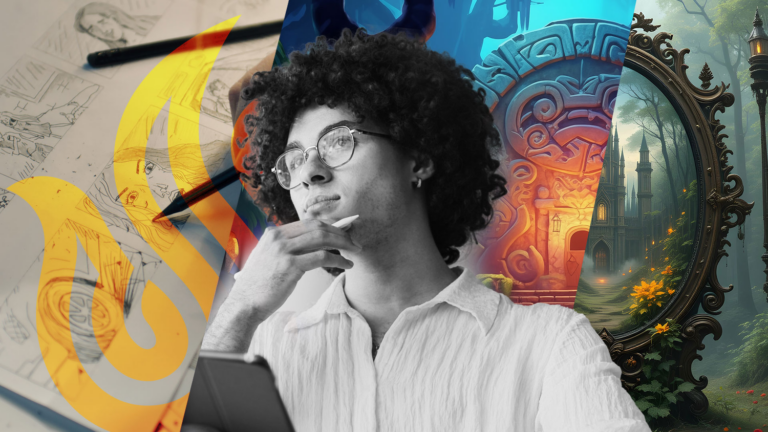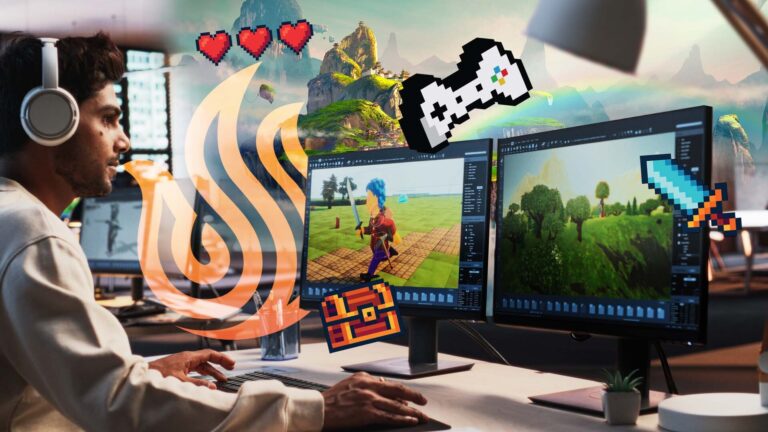A career in digital art and entertainment is exciting. Your dreams and passion have a chance of being seen by the world. Getting to wake up and contribute to artistic projects is an ideal position for many. Of course, there is a great deal of work and effort required to reach that career. Despite the demanding workload, obtaining a career in digital art and animation is more achievable than you realize. Allow your passion to carry you forward while learning all you can about the art that inspires you.
What Type of Careers Can be Obtained in Digital Art & Animation?
Digital artists can fill many roles throughout a successful career. Your best bet is to pick a focus once you understand the fundamentals of each major path. Keep in mind that you will have a great deal of flexibility once you have a few projects under your belt. Switching course and entering another digital art field is easy enough with the proper credentials.
Career #1: 3D Animator
First things first, you can opt for a traditional animation role in a 3D environment. Working in 3D space is similar to creating 2D art in some respects, but the added layer of depth breeds new possibilities and challenges. Much like in 2D animation, the goal is to breathe life into each scene by adding the element of motion. Items, characters, and environments need movement to convey a sense of believability. Stillness can be used for artistic effect in some rare cases, but animation will generally improve any given scene.
3D artists create animation with three primary methods. The first involves the use of keyframes to anchor each interaction. The second uses rigging characters to produce realistic movement. Characters with common body types need to move in a way that the audience will expect to avoid taking people out of the show. By simulating the internal structure of a body, animators can manipulate digital characters until they move in a plausible manner.
The third method is known as motion capture, in which the actions of real people are recorded through the use of body-mounted sensors. When perfectly accurate movement is mandatory, animators can hire real actors and stunt professionals to line up the perfect shot. The method you use will largely depend on the size of your studio and the budget allotted to a project.
3D animators often work at a dedicated animation studio. Of course, you can also get hired by a variety of other companies who need to maintain a visual presence. News reports, social media marketing, and other informational content creators are all likely to enlist animators to help add flair to their presentations.
As an animator, you can expect to collaborate directly with the modelers and environmental artists who build the other aspects of each scene you work on. If you are making a video game, expect to talk to programmers and level designers as well. Although the investors and money people rarely talk to the creatives, you may be given the opportunity to pitch your ideas to them as your career progresses.
Career #2: 3D Modeler
A 3D modeler is tasked with creating a majority of the assets used in a digital production. All the characters, objects, and many environmental details must all be sculpted by a skilled team of creators. The use of special software is used to sculpt each asset before it is exported to a game engine and placed into a scene. In addition to the form factor of each model, you are tasked with adding details such as textures and shading to each of your creations. Modern digital art is brimming with detail, and audience standards continue to evolve over time.
3D modelers work in almost all the same places that animators do. Whether you are hired by a dedicated animation house, or doing freelance work for a small indie firm, there is no shortage of opportunities for aspiring modelers. This also means that modelers will end up communicating with the same type of people as well. The key difference is 3D modelers can undergo more scrutiny from executives than an animator might. This is simply because the quality of your modeling job is easy for a layman to evaluate. As long as you always put your best foot forward, this extra attention could be an asset.
Career #3: Entertainment Designer
An entertainment designer is tasked with conceptualizing all the thrilling and emotional beats of a story. Regardless of which entertainment medium you favor, the goal of each is to tell a compelling story that leaves an impact on the audience. Animators and modelers do all the building, whereas the entertainment designer lays out the floorplan. Creating templates that evolve into engaging stories is the name of the game.
Entertainment designers spend a lot of time on pre-production activities. Worldbuilding, developing a plot, and drafting storyboards is all on the table. Giving the other artists enough direction is key to a successful project. Once proper work begins, an entertainment designer ensures the workflow keeps moving and each development milestone is reached on time.
A person in this role is responsible for talking to everybody. Since it is your vision that comes to life, it is your job to convey to everyone else the images you have in mind. The best ideas are useless if they cannot be communicated effectively and eventually executed by your team. You must also convince investors and executives that your ideas will be marketable. Which really means you must assure them your production will turn a profit.
Entertainment designers typically work at large studios with massive budgets. When there are millions of dollars on the line, having an entertainment designer manage the pipeline is a logical business decision.
Career #4: Game Writer
To create believable interactive worlds for players to explore, a great deal of writing is needed. Not only does the user need to understand how to interface with the software, but a digital realm must be full of interesting details to keep someone engaged for long play sessions. Story becomes increasingly important when a player is expected to spend dozens of hours with your game.
Game writers create dialogue, story scenarios, menu text, item descriptions, and every other piece of written information contained with a title. The nature of game writing changes dramatically to match the genre in question. Since nearly all games have at least some written content, you can work at a game studio of any size when pursuing this career path.
As for who game writers interact with, it is often entertainment designers and other creative leads. The writer is given guidelines and a story template to follow, but often has some freedom to create within those lines. Considering the size of AAA game projects, you can expect to work with a large team of additional writers that contribute to a production of that scale.
How Do You Get an Education in Digital Art & Animation?
It is easier than ever to break into the industry thanks to all the robust and effective degree programs available. Although you still must put in your due diligence while studying, you will always have a clear path forward. Contrast that with the early days of computing in which the pioneers of digital entertainment needed to blaze their own trails.
Degree Concentrations
The four careers highlighted throughout this piece each have matching degree concentrations. You will learn the fundamentals of your chosen craft before gaining firsthand experience with group projects. Each class project can then be transferred to your professional portfolio and used when searching for jobs. The curriculum is effective because you get to build knowledge of each program and procedure at your own pace. You also get to develop your communication and teamwork skills, which are paramount when collaborating with anyone on a creative project.
Industry Experienced Instructors
To help guide you along, each instructor is a veteran of their respective field. Essentially, this means they have their names in the credits of published projects. They know what is required to work in digital art and animation and can give you the best advice. They can also elevate your personal style by pointing out ways you can improve throughout your degree program.
Career Services
Once graduation is upon you, the support does not stop there. Career services staff will help you acquire your first industry position. You are matched with job listings that are relevant to your interests and experience level. University of Silicon Valley’s network is filled with industry contacts looking for new recruits. Utilize this support structure and put all your skills on display once your first professional opportunity emerges.
Want to Learn More?
If your passion is for visual effects, 2D or 3D animation, or concept art for video games or blockbuster films, this is the Digital Arts & Animation degree program for you. Gain the digital arts and animation skills you need to kick off your career in this dynamic and growing industry.
University of Silicon Valley is uniquely poised to offer a meaningful and valuable education for 21st century students. We believe in an education that directly correlates with the work you’ll be doing after you graduate. Interested in learning more? Contact Us today.


